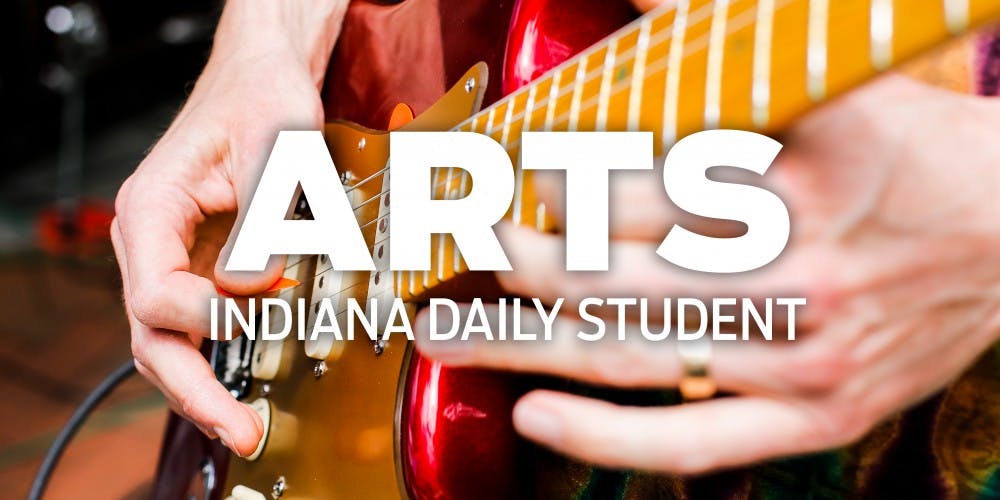The IU Bucket List includes a variety of campus-driven activities recommended for incoming students.
“At night, lie on the ground and watch the lights change on the side of the IU Art Museum.”
“Look at the stars from the Kirkwood Observatory.”
“Kiss someone special at the Rose Well House at midnight.”
From the latter list item stems a long line of stories, and from that line another, the physical line of a few couples waiting to kiss under the gazebo at midnight on Valentine’s Day.
Each year, young couples will wait by the structure near the center of campus to kiss their significant others under the roof of the Well House. The walls of that shelter have seen countless kisses and proposals over the years, and the tradition began with the reveal of the house in 1908.
Carrie Schwier, outreach and public services archivist for the Indiana University Archives, said the historical reminiscence is possibly one of the reasons the kissing tradition has lasted more than 100 years.
“In particular, I think it’s probably the nostalgia of it, the romance, the sense that, too, it’s been a traditional for generations,” Schwier said. “For a lot of students, their parents and grandparents have possibly gone to university here, so maybe they’ve heard stories from parents or grandparents who were meeting up at the Rose Well House for dates.”
A paper written by Carson Smith, who was a student at IU in 1973, delved into the folklore and tradition behind what was at that time dubbed the Beta Well House. His paper described the established location as a premiere kissing spot for young couples.
“Young women are still ‘becoming coeds,’ getting ‘pinned’ and being asked to marry under the shade of the Well House,” Smith wrote.
The Rose Well House was named after student Theodore F. Rose, a member of the class of 1875 who presented the house to the school, according to Smith’s paper.
The gazebo was initially built in 1908 as a shelter for drinking water, and anyone who visits the space today notices the drinking fountains located in the middle of the shelter. These serve also a reminder of its original purpose to distribute water as a fire cistern.
“The arches in the Rose Well House actually came from IU’s old campus,” Schwier said. “When the original campus building burned down, they took those parts of it and made the Rose Well House. It’s kind of a mix of the old and the new.”
The space gained the supplemental name of “Beta Well House” because of the structure’s design, the shape of the Beta Theta Pi fraternity pin, symbolizing Rose’s brotherhood within the group.
The traditions of the kiss under the Rose Well House were, at the time of Smith’s writing, most well known by members of Greek houses on campus.
For years after the establishment of the tradition, the label of coed, a female student at a coeducational school, was designated only to women who had the experience of being kissed inside the house, according to an IDS article written by Joyce Lakey in 1950.
Schwier said that the Rose Well kiss, unlike some of the other enduring IU traditions, seems to have been through the history more closely tied to defining that student’s role.
“I can’t think of any others that I’ve heard of any others where they say, ‘If you graduate without doing this, you’re not a student,” Schwier said. “It’s interesting that it’s mostly directed at female students, I think it’s very telling.”
The rules to becoming an official coed in the ‘50s dictated female students should meet a romantic partner at Rose Wells at midnight and kiss them under the shelter.
“The embrace, of course, must last for the duration of the twelve bells,” Lakey wrote.
The midnight tradition held special significance back when women attending the school had a strict 11 p.m. curfew. The act then was not just romantic but also a risk of repercussions if the lovers were caught, according to another story written by Michelle Abels for the IDS in 1995.
The popularity of the tradition decreased according to multiple articles written in the 1960s, stating that the outdated tradition was no longer carrying the same significance in the minds of young students.
The 1995 story by Abels found that women were still not considered “real students” unless they had been kissed under the house at the stroke of midnight on any night. The piece acknowledged that, over the years, Valentine’s Day evolved into a popular date choice because of the significance as the day celebrating love.
Smith concluded his paper by asking why the tradition proliferated even into the mid-1970s.
“Part of it is taking amusement in the practices of the past,” Smith wrote. “But perhaps the best reason for the folklore of the Well House is the same reason for which it was created – it serves to bring young couples together.”
What is most interesting about the enduring myths, such as that of the Rose Well House and other locations on campus, are the stories, which IU Archives has been working to uncover through oral histories, Schwier said.
“I’m always fascinated about the romantic stories that come along with it,” Schwier said. “Sometimes we’ll interview couples that went through the university, so it’s usually people who are my grandparents’ age, so it’s always really endearing to hear these stories where their couples talk about their early relationships and how they were built on campus.”






